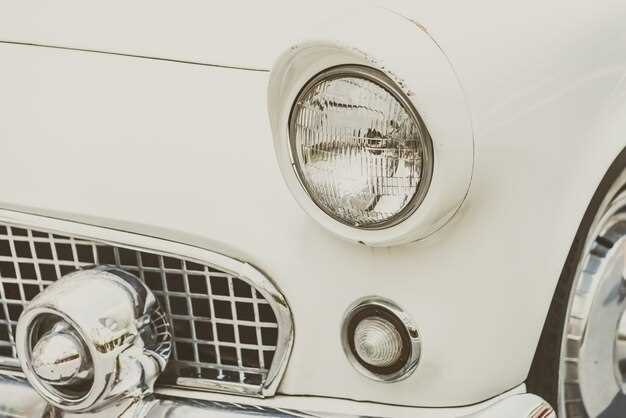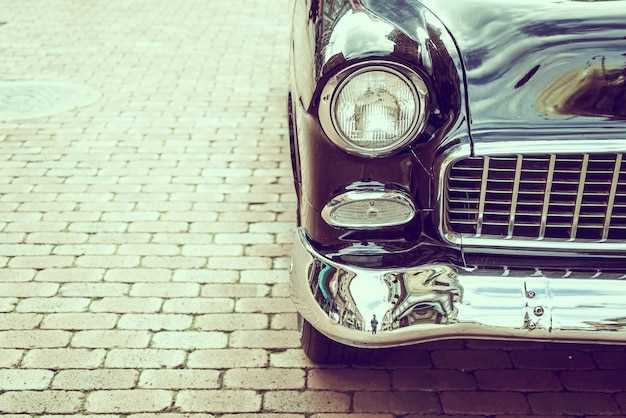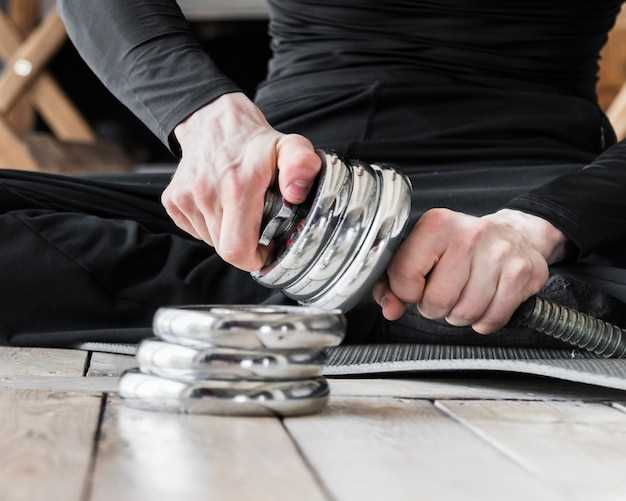Begin your restoration by gathering a solid plan. Outline your goals and set a budget that factors in all costs, from parts to potential labor. Assess the condition of your vehicle carefully. Look for signs of rust, frame damage, or engine wear; these issues will guide your approach and influence your timeline.
Once you have a clear picture, start disassembling the car methodically. Keep track of every bolt and screw, labeling them for easy reassembly later. Document the disassembly process with photos; this will serve as a helpful reference when it’s time to put everything back together.
After the car is stripped down, focus on the bodywork. Address any rust spots and dents early on. Use high-quality primer and paint to ensure a durable finish. Remember, the quality of your bodywork sets the tone for the entire restoration.
Next, turn your attention to the engine and mechanical components. Evaluate the engine’s condition and replace any failing parts. Flush the fluids and check the brakes, transmission, and suspension systems. Upgrading these components can enhance your car’s performance significantly.
Reassembly is a satisfying stage. As you rebuild, refer back to your notes and images. This is a great opportunity to add personal touches, whether it’s a new stereo or custom upholstery. Prioritize safety features to ensure your classic car is enjoyable to drive while maintaining its vintage charm.
Assessing the Condition of Your Classic Car
Begin your assessment by conducting a thorough visual inspection. Look for rust spots, dents, and paint inconsistencies on the body. Pay special attention to the wheel wells, undercarriage, and lower panels where moisture often accumulates, leading to corrosion.
Next, examine the engine bay. Check for leaks, corrosion on battery terminals, and cracked hoses. Listen for unusual sounds while the engine runs. Any knocking or irregular noises could indicate deeper mechanical issues.
Evaluate the brakes and suspension components. Inspect brake pads, rotors, and lines for wear. A bouncing or swaying ride could suggest worn shocks or struts that need replacement.
Next, assess the interior. Check seats, dashboard, and carpeting for wear and tear. Test all electrical components such as lights, wipers, and the audio system to confirm they are operational.
Examine the tires for tread depth and sidewall condition. Uneven wear patterns can hint at alignment issues or suspension problems. Ensure the spare tire is in good condition as well.
Last, take your classic car for a test drive. Pay attention to how it accelerates, brakes, and shifts gears. Notice any vibrations or steering difficulties that may require attention.
Document all findings in detail. This record will help you prioritize repairs and track progress during the restoration process.
Creating a Detailed Restoration Plan and Budget
Outline each phase of your restoration project clearly. Break down tasks into smaller, manageable components covering areas like bodywork, engine restoration, interior refurbishment, and paint. Assign priorities to each task based on your car’s condition and your personal goals.
| Task | Description | Estimated Time | Estimated Cost |
|---|---|---|---|
| Bodywork | Repair or replace damaged panels, remove rust, and prepare for paint. | 4 weeks | $1,500 |
| Engine Overhaul | Inspect, clean, and possibly rebuild or replace engine components. | 6 weeks | $2,500 |
| Interior Refurbishment | Repair or replace upholstery, carpets, and dashboard elements. | 3 weeks | $1,200 |
| Painting | Strip old paint, apply primer, and complete final paint job. | 2 weeks | $1,800 |
Add contingency funds to your budget, typically 10-20%, for unexpected expenses. Material costs can fluctuate, so it’s smart to research and secure quotes from multiple suppliers and professionals. Track all expenditures and adjust your plan as necessary to stay within budget.
Regularly review progress against your timeline and budget. Set up a simple spreadsheet to log each task’s status, costs incurred, and notes on any challenges. This will help keep your project on track and provide an overview of your financial commitments.
Are there specific modifications or upgrades you want to incorporate? Factor those into your budget early on, as they can significantly impact final costs. Prioritize original features to maintain authenticity but remain open to practical enhancements that improve performance or safety.
With a clear restoration plan and budget in place, you elevate your project’s chances of success while ensuring that restoring your classic car becomes a rewarding experience.
Finding and Sourcing Parts for Your Restoration
Begin your search for classic car parts with online marketplaces like eBay or Craigslist. These platforms often feature listings from sellers parting out vehicles or those who have spare pieces. Set alerts for specific parts to get notifications when they become available.
Join dedicated forums and social media groups focused on your car’s make and model. Engaging with a community of enthusiasts can provide leads on hard-to-find parts and experienced sellers. Don’t hesitate to ask for recommendations; these members often have tips based on their own restoration experiences.
Visit local auto salvage yards or specialty wrecking yards. Many classic cars are scrapped, yet they may still have usable components. Bring tools for quick removal, as these places often operate on a “pull your own parts” basis.
Consider contacting manufacturers of reproduction parts for classic cars. Many brands produce high-quality replacements for common components, ensuring authenticity while improving reliability. Request catalogs or check their websites for available pieces.
Attend car shows, swap meets, or classic car events. These gatherings provide opportunities to browse and purchase parts directly from vendors. Networking with other car enthusiasts can yield valuable contacts who know where to find specific items.
Check out classified ads in automotive magazines. Many classic car enthusiasts still utilize print media for buying and selling parts. Look for sections dedicated to parts sales for potential leads.
Don’t shy away from international sources. Many classic car parts are available from overseas sellers, especially if your car was popular in other countries. Just ensure you account for shipping costs and customs duties.
Document the parts you need as you progress through your restoration. Maintain a list with specifications and potential sources. This organized approach streamlines your search and helps prioritize crucial needs.
Step-by-Step Process for Disassembling Your Classic Car
Begin with gathering the necessary tools: sockets, wrenches, screwdrivers, pliers, and a torque wrench. A good light source and a camera for documentation will also help throughout the process.
Document the Current State:
Take detailed photos of your car from multiple angles before starting. This will serve as a reference during reassembly.
Remove the Battery:
Disconnect the negative terminal first, followed by the positive terminal. Safely store the battery away from the workspace.
Drain Fluids:
Remove engine oil, coolant, and fuel. Use appropriate containers to prevent spills. Make sure to follow local regulations for fluid disposal.
Take Off the Wheels:
Lift the car with a jack and securely position jack stands. Remove lug nuts using a wrench and take off each wheel carefully.
Remove the Exterior Components:
- Start with the bumpers and grille.
- Proceed to remove the lights and any trim pieces.
Store hardware in labeled bags for easy access later.
Detach the Interior:
- Remove seats and floor coverings.
- Take out the dashboard to access wiring and instruments.
Label all wires and components to simplify reinstallation.
Disassemble the Engine:
Remove the air cleaner, belts, and hoses. Unbolt engine mounts and carefully lift the engine out of the bay using a hoist.
Take Apart the Suspension:
Start with the front suspension components, including control arms, sway bar, and shocks. Move to the rear suspension, removing leaf springs or coil springs as necessary.
Remove the Frame:
If your car has a unibody construction, carefully detach it from the undercarriage. For a body-on-frame chassis, unbolt the body from the frame.
Organize Parts:
Use bins or marked containers to store all components, such as nuts, bolts, and small parts. Keep everything organized for a smooth reassembly process.
This structured approach streamlines your disassembly, paving the way for a successful restoration.
Tips for Painting and Finishing Touches
Choose a well-ventilated area with minimal dust for painting. This reduces the risk of imperfections in the final coat. Before you begin, gather all necessary tools, including a high-quality paint sprayer or applicator, masks, and appropriate safety gear.
Prepare the surface meticulously. Sand down old paint and imperfections, using progressively finer grit sandpaper. Clean the surface with a degreaser to remove oils and contaminants. A smooth, clean surface is crucial for proper paint adhesion.
Select high-quality automotive paint that matches your vehicle’s specifications. Consider a base coat with a clear topcoat for added protection and a glossy finish. Test the paint on a small area to ensure it meets your expectations before full application.
Apply paint in thin, even layers to avoid drips and runs. Allow each layer to dry completely before applying the next. Follow the manufacturer’s instructions for curing times, as rushing can lead to blemishes.
After painting, inspect the surface for any imperfections or imperfections. Use fine-grit sandpaper to lightly sand any rough areas. For a polished finish, buff the surface with a rubbing compound, then apply a finishing polish to enhance the shine.
Finally, protect your work with a quality wax or sealant, which will prolong the life of your finish. Regular maintenance keeps your classic car looking its best, making it a pleasure to showcase on the road.
Final Assembly: Putting Your Classic Car Back Together
Begin by carefully organizing all your components. Lay out the parts in a manner that allows easy access. Start with the body and frame assembly. Ensure all body panels align and fit snugly, utilizing shims if necessary to close any gaps.
Secure the body to the frame with bolts, using a torque wrench to meet specified torque settings. A consistent approach here prevents future rattling or misalignment.
Next, reinstall the engine. Position it carefully on the mounts, ensuring that all connections align properly. Double-check all hoses and belts: they should not be twisted or pinched. Tighten each connection, adhering to the manufacturer’s specifications.
Once the engine is in place, attach the transmission. This step may require an assistant to hold the transmission steady while you bolt it to the engine. Ensure that the clutch or torque converter is correctly aligned to prevent vibration or damage.
Proceed to the electrical system. Reattach the battery and connect all wires according to your notes or diagrams. Test the lights, signals, and horn before fully enclosing any assemblies. This avoids unnecessary disassembly later.
Install the suspension components after the drivetrain is secured. Check for wear on bushings and joints. Any worn parts can compromise handling; use replacement pieces as needed. After installation, ensure proper alignment.
Focus now on the interior. Reinstall seats, carpets, and dashboard components methodically, ensuring all wires are correctly routed to avoid future snags. Check that gauges and controls function properly before finishing up.
Finalize your assembly with the exterior. Ensure all hardware for doors, hood, and trunk is tightened. Check gaps and alignments one last time for a polished appearance.
Complete the process with final touches, such as detailing and waxing, to protect your classic car. This entire assembly stage is about attention to detail and precision in work, setting the stage for many enjoyable rides ahead.






